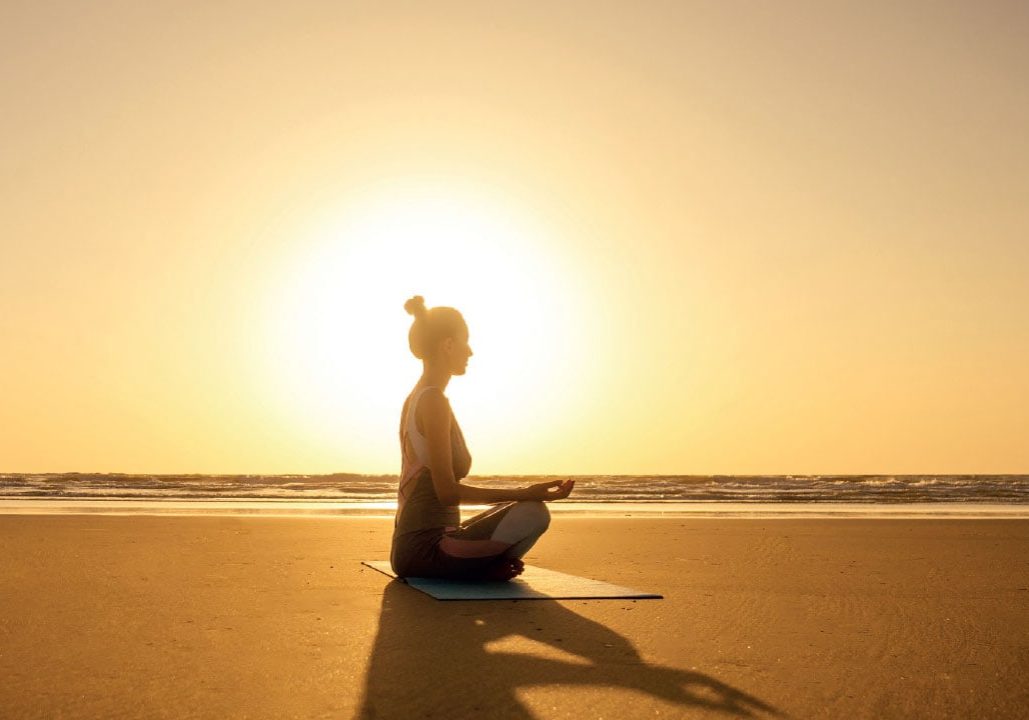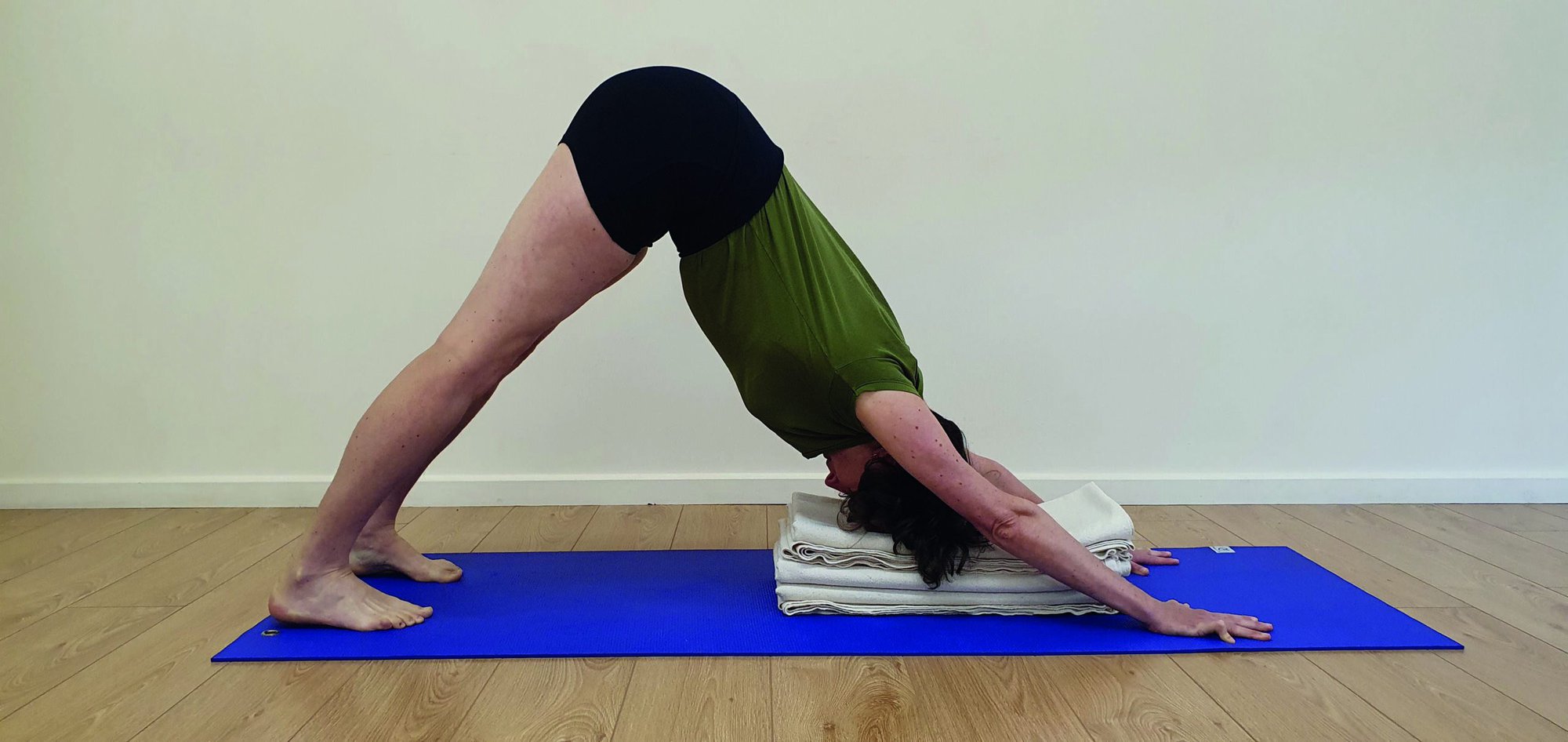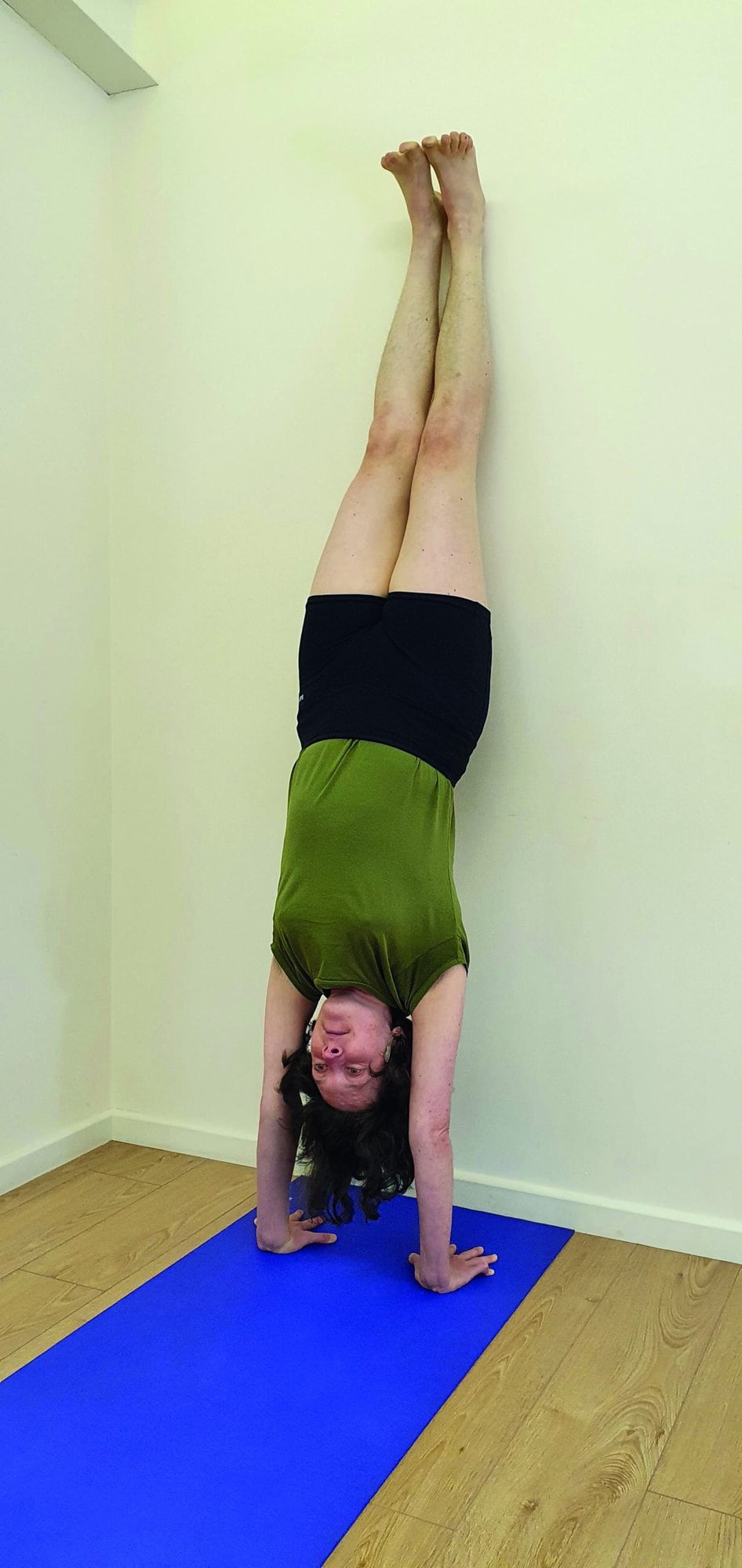
Iyengar Yoga For Stress
Stress and yoga: how this ancient practice can find a way to ease us through the challenges of modern living. By Claire Ferry
Even as a long-term yoga practitioner and teacher, and as someone who has directly experienced the power of a personal yoga practice to help me face stressful situations from being a carer to financial and work pressures, I hesitate to write about ‘yoga for stress’. Such a huge topic!
Yoga ‘for’ stress implies a quick answer, a prescription sequence to ‘fix’ the perceived problem. Yoga is yoga, it isn’t ‘for’ anything. Yoga is the stilling of the fluctuations of the mind: yogaḥ cittavṛtti nirodhaḥ (according to the Yoga Sutras of Patanjali).
In relation to stress then, you could say it is a state of non-stress. Stress, whether physical tension or emotional pain, activates plenty of ripples in the mind. Aversion to the sensations of stress, desire to be free of them. At the same time, a friend said to me: “Isn’t all yoga for stress?”
There are many paths of yoga, just as there are many sources of stress. There is no one-size-fits-all. One person’s solution to their stress would not help another.
Thankfully the eight-limbed (aṣṭāṅga) path of yoga gives us many options. We can take a path of an intellectual and practical approach to living our lives through the yama and the niyama, giving us a perspective on our relationship with ourselves and with others. There is the bhakti tradition through Īśvara praṅidhāna of devotion and surrender to a greater power, God, the Universal Soul.
We can work through Āsana, the physical postures, directly affecting the physical body at the outer layer (the skin, muscles, bones) or deeper inwards to the organs and the nervous system. Prāṇāyāma works through knowledge of the breath and pratyāhāra through turning the senses within, both leading us to a state of composure where we can focus (dhāraṇā) and meditate (dhyana) taking us towards samādhi.
All these paths are linked. You pick up the tail of one thread, you inevitably entwine yourself with the others. Happily, practitioners and teachers have gone before us, experiencing these effects through empirical observation. Now there is an increase in scientific research into how these approaches work on anatomical, physiological and psychological levels which can enhance our understanding.
Within the tradition of yoga I practice, aṣṭāṅga yoga within the lineage of BKS Iyengar, we have all these paths open to us. BKS Iyengar’s genius was to make so many of the physical postures accessible, and then use those as the gateway to all the other aspects of the yogic path.

WHAT IS STRESS
What is stress after all? We could say all life is stressful to some degree. BKS Iyengar commented “walking, eating, reading – everything is stress!” What concerns us is the degree of stress, how it affects the nervous system and how we react to that. For example, sometimes we need ‘positive stress’ that we deal with in the moment, that motivates us to complete a task, or alerts us to danger.
Here, we talk about stress as that which impacts the nervous system, creating feedback loops such that pain or tension accumulates in the physical body or mind. An experience happens, there’s a shot of adrenaline, the stomach churns, the mind notices ‘butterflies’ in the stomach, the brain and the ego interpret this as being scared, the breathing rate ramps up, the heart thuds….we all recognise this cycle.
These feelings can set into longer term emotional states of anxiety, anger or fear, and the body absorbs these into ailments like insomnia, digestive problems or clinical depression. People start a yoga practice for many reasons. Initially they may refer to stiff shoulders or back pain, or a desire to be more flexible. I’ve observed that it’s the calming effect on the nervous system which keeps them coming back.
HORSES FOR COURSES
Telling someone to lie down and relax if they’re a busy-thinker or an anxious person may well not work! Similarly, if someone is depressed already, turning inwards may aggravate the condition. We need to recognise the balance of rajasic (active, fiery), tamasic (dull, weighty) and sattvic (clear) energies and use the yoga practice to bring balance.
For an agitative condition in the body or mind, an active physical practice might be needed to burn off some energy first, before then bringing the body to quietness and settling the mind. Where the body and mood are heavy and low, bringing activity to lift the chest and open the heart in a supported way raises the energy enough to give motivation for continued practice.
We might question how yoga achieves what it does. Personally, I have had enough experience now to have faith that it does work, and therefore to go with it even on the days when I don’t feel like it. But here are a few likely reasons:
- Psychological benefit of focusing the mind on something else – distraction therapy – if you’re thinking about what your little toe is doing then there’s no brain space left to worry about other things!
- The social aspect of a class, getting out of the house, meeting a supportive community.
- A sense of achievement and opening doors to new possibilities of what your body can do.
- Time out for you amidst the hustle and bustle of life, an act of self-kindness.
- The physical impacts, such as the effect of breath and postures to activate the parasympathetic nervous system (rest & digest instead of fight/flight/freeze).

PRACTICE SUGGESTIONS
There are poses which give immediate relief from symptoms of pain and distress. These give us space for an ongoing practice, cultivating the mind to identify underlying causes of the automatic ego-based reactions, allowing stresses to dissipate before they have longer term effect. Here are some you might like to try.
Feeling agitated, can’t settle? Try several rounds of sun salutations, handstand (or half-handstand), then support the head in downward dog. Standing poses are a good grounding too.
Low mood? Fake it until you make it by lifting your chest. Definitely use the support of a wall and props to help you. I’ve shown a supported version of Vīparita Daņḍāsana over the chair here, with the sternum opened over the edge of the chair and the head supported. Or be playful! Try rolling from Paschimottānāsana (seated forward fold) to Halāsana (plough) and back to lift your spirits!
Gut issues, menstrual pain? Supta Baddha Koņāsana is heaven sent, allowing the abdominal and pelvic organs to relax and release to the spine.
Sheer exhaustion? Paschimottānāsana (and other forward bends) and Vīparita Karaņi are both wonderful. I’ve shown these with a head/eye wrap which some people find helpful, especially for sensory overload and headaches.
Too much thinking? Supported forward bends (e.g. Paschimottānāsana) help relax the brain and bring the mind and body to the present moment. Supported Sarvāngāsana and Halāsana, like Vīparita Karaņi, take the eyes back and soften the throat, thereby quietening the mind also.
HELPFUL POSES TO TACKLE STRESS
- Adho Mukha Śvānāsana with head support (downward dog)
- Adho Mukha Vṛkṣāsana (handstand or half)
- Ardha Chandrāsana (half-moon pose) - try it with your back against a wall and the lifted foot on support – also my go-to pose for menstrual cramps
- Rolling from Paschimottānāsana to Halāsana and back
- Vīparita Daņḍāsana over a chair with head support (inverted staff pose)
- Setu Bandha Sarvāngāsana (supported back bend with head/neck towards
jalandhara bandha) - Supta Baddha Koņāsana (reclining cobbler pose) – more relaxing if the legs are supported, for example with rolled blankets as shown here. Could also use a belt behind the sacrum and around the feet.
- Paschimottānāsana (seated forward bend) – over a bolster and with head and arms supported, so the armpits are open and head quietened.
- Vīparita Karaņi (legs up the wall) – also with jalandhara bandha
- Sarvāngāsana/Halāsana (shoulderstand and plough)
- Prāņāyāma with spinal support – Prāņāyāma can be very powerful and it’s a good idea to simply start with breath observation
- Śavāsana – weights on the legs help further quieten the nervous system
CONCLUSION
In the end, maybe yoga for stress is not such a huge topic, not so complicated as all that. Try some movement and playfulness, some relaxation, some breathing. Be kind to yourself. No need to sweat the small things.
If stress is coming from pain from a specific condition – back pain, sciatica, shoulder/neck tension, period pains etc – there are likely to be poses and modifications to help relax and release the body. Overall, aim for a balanced practice, gradually developing physical and emotional resilience.
Iyengar yoga teachers undergo long initial training and ongoing professional development and will be able to help you adapt your practice to your body and needs. Find a yoga class at a venue and time which suits you and have a go! Look for a teacher with appropriate experience, with whom you feel comfortable and where you enjoy their style of teaching.
That will encourage you to keep practicing! A good starting point is the teacher/class search facility on the Iyengar Yoga UK website (iyengaryoga.org.uk) or if you’re outside the UK and Ireland, the BKS Iyengar website (bksiyengar.com).




